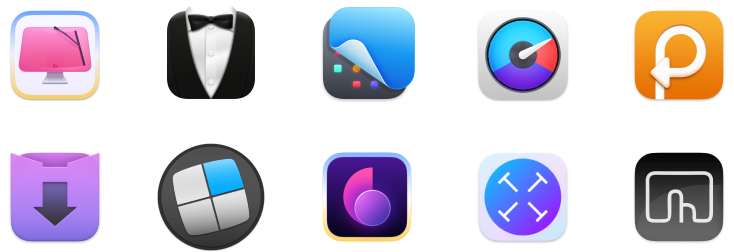How to completely uninstall programs on a Mac [2026 Guide]
- Dragging apps to Trash doesn’t fully uninstall them.
Manually deleting apps by moving them to Trash leaves behind caches and support files that take up valuable disk space. A complete removal requires cleaning up hidden leftover data. - Manual app deletion works but is incomplete.
You can remove apps via Launchpad or Finder, but both methods leave residual files. You’d need to go into~/Library/folders like Application Support and Caches to delete remnants manually. - Use CleanMyMac for automatic complete removal.
CleanMyMac detects and deletes apps with all their leftover files, caches, and hidden components in one click. It also helps optimize your Mac’s performance, remove junk, scan for malware, and more. - Close all running apps before uninstalling.
Sometimes, apps can’t be uninstalled because they’re still open. QuitAll lets you quit any number of apps — or all of them at once — including those running in the background, directly from your menu bar, ensuring smooth uninstalls. - Get both CleanMyMac and QuitAll with Setapp.
Both CleanMyMac and QuitAll are available on Setapp — along with 250+ other curated apps for Mac and iOS. Start your 7-day free trial.
Uninstalling apps on Mac is trickier than it might seem. If you uninstall apps by putting them into the Trash, their cache and residual files will remain on your Mac, taking up space and cluttering your space. Luckily, there’s a better way. Let’s explore how to uninstall apps on Mac in a few clicks without leaving anything behind.
How to uninstall Mac apps: All solutions, briefly
I suggest you start with this quick problem-solving table, which includes all the key decisions you may need.
| Type of deletion | Process | Pros | Cons |
| Automatic complete removal (click to get a detailed guide) |
1. Install and open CleanMyMac. 2. Go to Applications in the sidebar and click Scan. 3. Click Manage My Applications, select the apps. 4. Click Uninstall. |
♦ One-click removal ♦ Deletes all traces including leftovers, caches, and support files ♦ Supports batch removal ♦ Includes extra Mac optimization features (junk cleanup, malware scan) |
x Requires installing a third-party app ♦ But with Setapp: CleanMyMac + 250+ apps free for 7 days, then one flat fee. |
| Manual via Launchpad | Drag the app icon from Launchpad to the Trash → empty Trash. | Quick and simple; no extra tools required. |
x Leaves behind caches and leftover files x Requires going to ~/Library/ and manually deleting the remnants of your apps from various subfolders, such as Application Support, Internet Plug-Ins, Preferences, and more. x Not thorough |
| Manual via Finder |
1. Open Finder → Applications. 2. Drag the app to the Trash. 3. Empty the Trash. |
Works for apps not visible in Launchpad; straightforward. |
x Does not remove support files, caches, or leftovers x Wastes storage over time |
| Using native uninstaller | Check the Applications folder or app documentation for a built-in uninstaller → run it. | Tailored to the app; often removes hidden files effectively. |
x Not all apps include uninstallers x May still leave some traces |
| Command-line removal via Terminal |
Open Terminal and run:sudo uninstall file://[path-to-app]
|
Precise control for advanced users; helpful in special cases. |
x Risky if commands are incorrect x Not guaranteed to remove all leftovers |
| Removing System Settings panes | Open System Settings → right-click the app's pane → Remove. | Cleans up System Settings interface; fast for apps that add panes. |
x Only removes the pane shortcut x Doesn't affect the app if it’s still installed |
How to uninstall Mac apps manually
The most important thing to know about manually deleting Mac apps is that in almost every case, it leaves behind traces you’ll have to remove yourself (I’ll show you how). Otherwise, your Mac’s storage space will gradually fill up with unnecessary junk, Mac system data, and over time, it may start to lag.
Move to Trash to permanently remove apps from your Mac
When installing apps temporarily, some Mac users prefer to keep their icons right on the Desktop. In this case, when you no longer need a given app you can simply drag and drop it onto the Trash icon in the Dock to delete it.

How to delete apps on Mac using Launchpad
One of the quickest ways to browse through your collection of apps is by activating Launchpad. The default way to do it is to pinch your trackpad with four fingers, but you can also configure a custom keyboard shortcut for it.
Once you activate Launchpad, you can drag and drop any app icon to the Trash in the Dock. Then, empty the Trash.
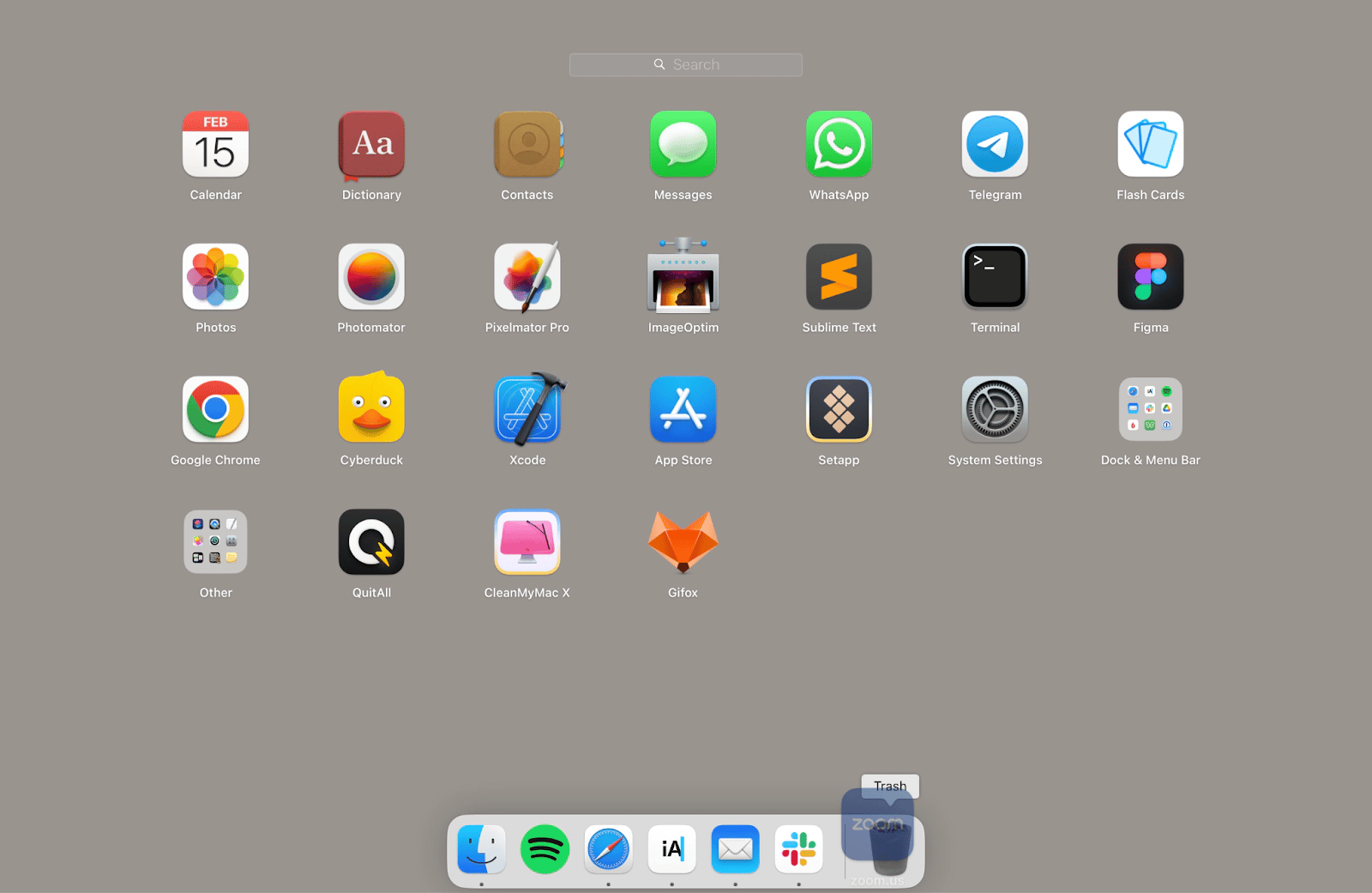
How to delete apps in Finder
The most popular way to delete apps on Mac manually is to do it through Finder.
Once you open Finder from the Dock and navigate to the Applications folder (or use the shortcut Shift + Command + A), you can right-click on the name of the app and choose Move to Trash. Alternatively, select and press Command + Delete.
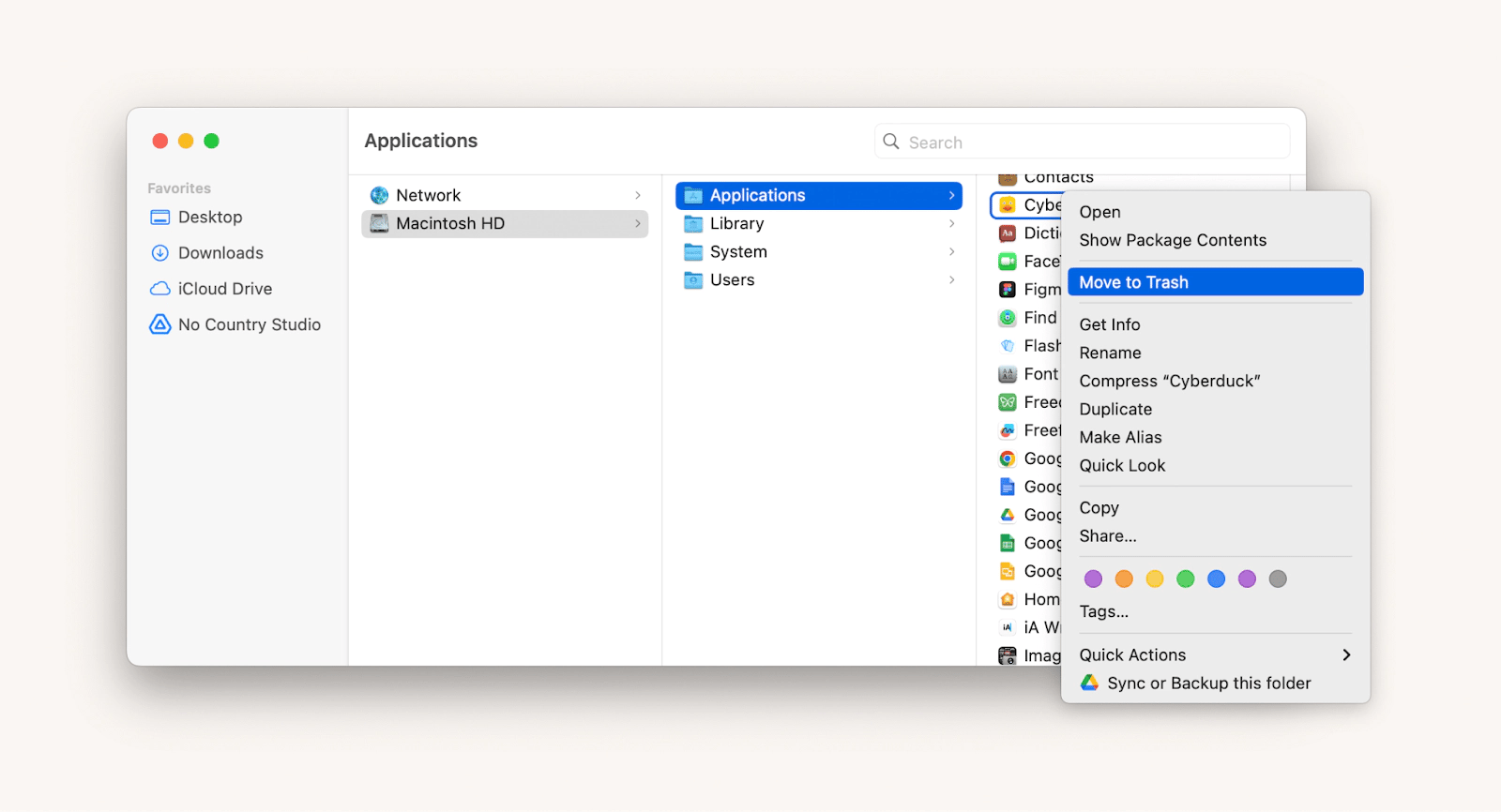
How to uninstall programs using Terminal
Technical users sometimes prefer to complete tasks without leaving Terminal (or Terminal alternatives). And it’s possible to use Terminal for deleting apps too.
Note: Terminal requires understanding command-line interface. Plus, it's so powerful that typing in a wrong command can have unpredictable consequences for your Mac. This method, just like other manual app deletion methods, doesn't guarantee a 100% result. For beginners, the process might seem tedious, but I'm sure you'll get it if you follow this step-by-step guide.
Here’s how to uninstall applications with Terminal:
- Open Terminal.
- Type sudo uninstall file://.
- Drag and drop the app next to the line you’ve just typed to reveal its file path.
- Press Return.
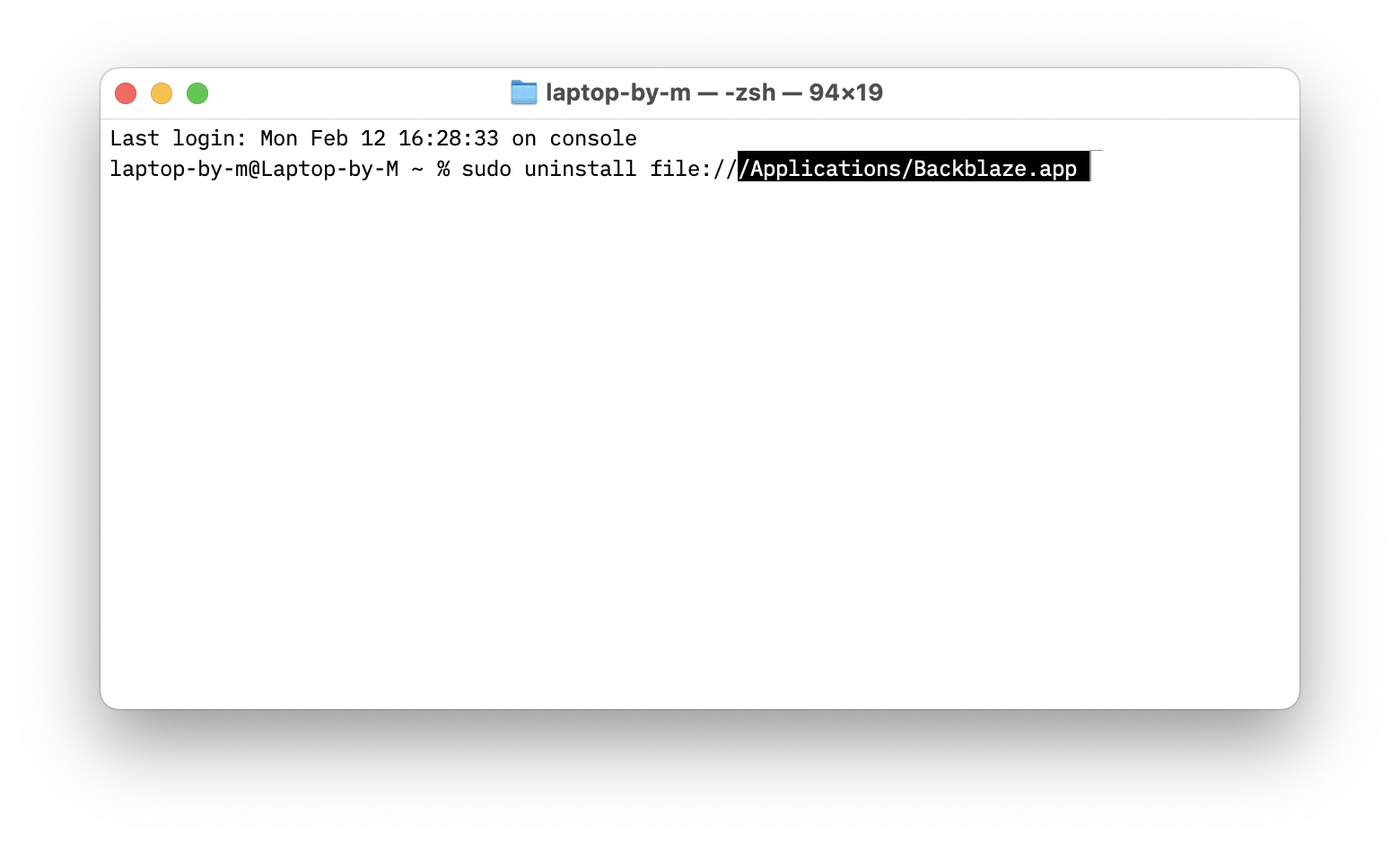
How to clean up application data manually
It’s possible to delete an app on a Mac and clean up its data manually. While it’s a tedious process that doesn’t guarantee 100% results (as in deleting all the leftover files), some users might try it even just to learn more about how the macOS file system works.
Here’s what you need to do to clear apps on Mac as well as their leftovers:
- Delete the app you don’t need by following one of the ways described above.
- In Finder’s menu bar, select Go ➙ Go to Folder… (Shift + Command + G), type in ~/Library/ and press Return.
- Check various folders to delete the remnants of your app, such as Application Support, Internet Plug-Ins, Preferences, Saved Application State, Caches, and Address Book Plug-Ins.
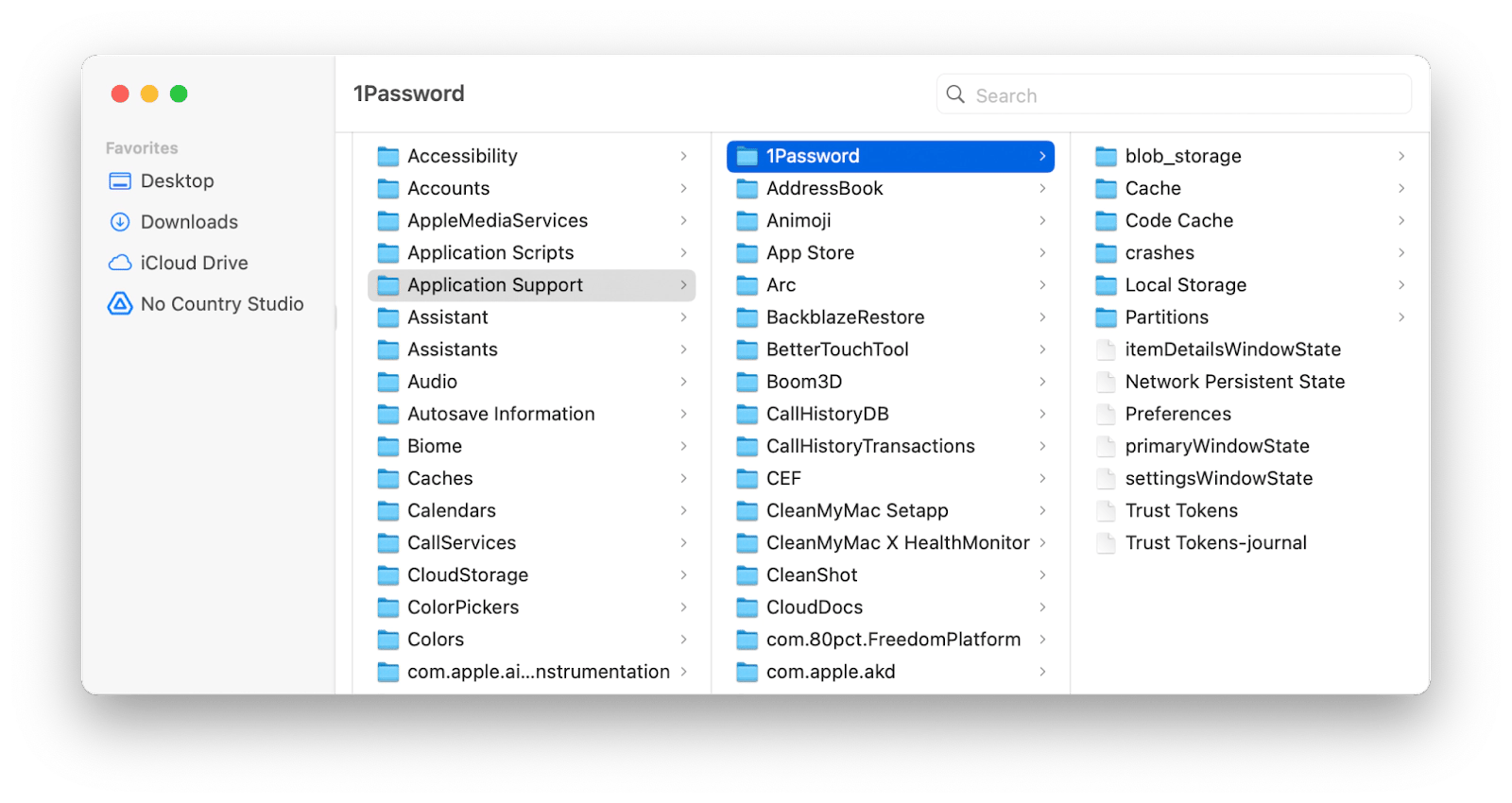
NoteAlthough the folders listed above contain most of the leftover files, some apps can choose to place theirs in other parts of your Mac as well. Check the particular app’s documentation for more information. This is also why we recommend solving everything faster with Mac uninstall applications. If you're trying to protect your data overall, also check out how to clear system data on iPhone. |
How to uninstall apps using native uninstallers
You can often see technical apps that require access to macOS at the system level or that act as a platform for other apps that feature their own uninstallers.
In this case, it’s a good idea to use the uninstaller first, as it knows all the places where caches and leftover files might be hidden. Make sure to check for the native uninstaller file in the Applications folder or refer to the app’s documentation.
Even after you’ve used a specific app’s uninstaller, it’s a good idea to scan with a general Mac uninstaller, such as CleanMyMac, since it’s likely to still find a few files left over.
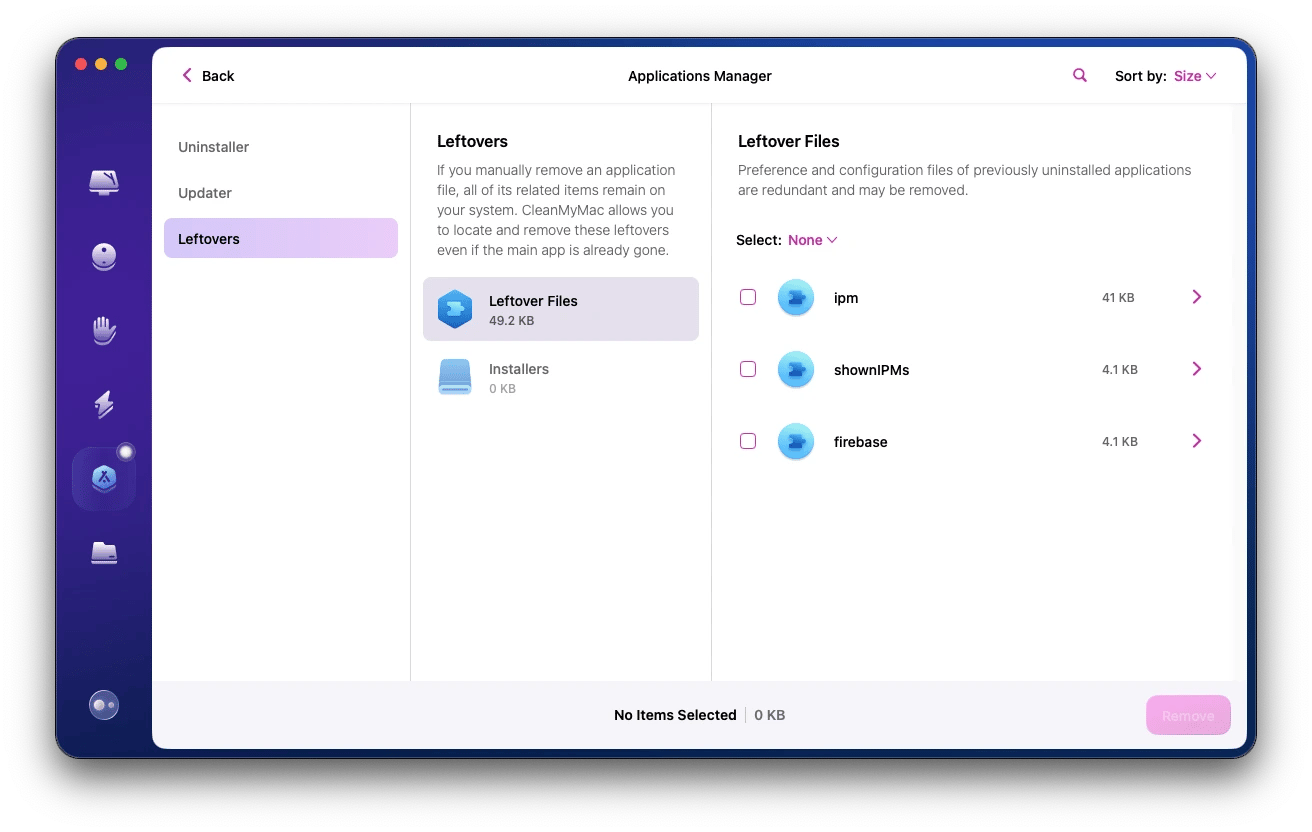
How to remove Mac apps automatically
If you want to uninstall apps automatically and completely, I recommend using CleanMyMac, a Mac care app from Setapp (which has 250+ other apps under a single subscription). It allows you to:
- Remove apps with one click
- Delete multiple apps at once
- Erase all traces, including leftover files, support files, associated files, caches, installation files, and more
Here’s how to delete an app using CleanMyMac:
- In CleanMyMac, go to Applications in the sidebar and click Scan.
- Click Manage My Applications, view the list of installed apps, and select the ones you want to delete.
- Click Uninstall.
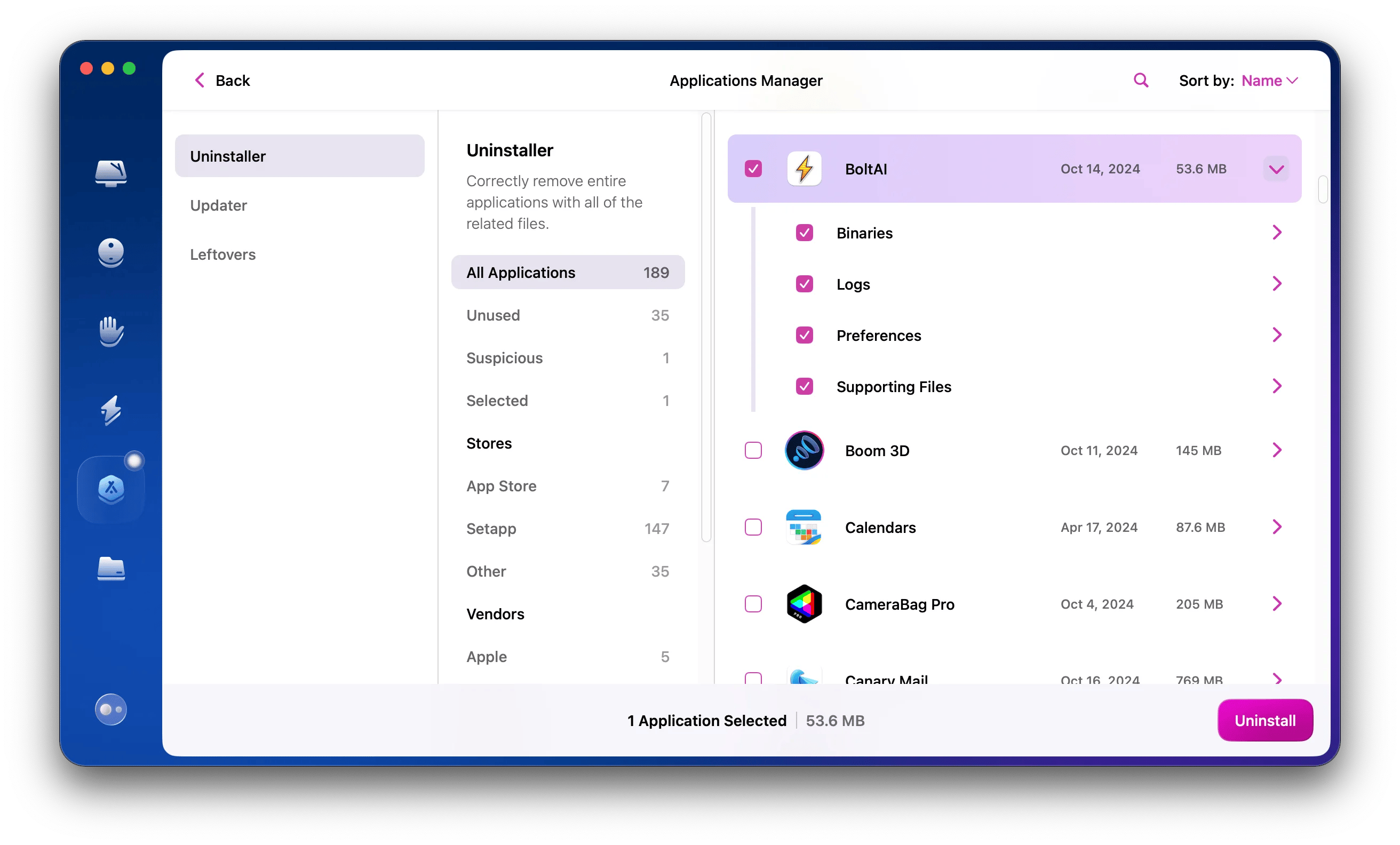
In addition to app removal, CleanMyMac also helps optimize your Mac’s performance in various ways — cleaning system files (junk), deleting unnecessary mail attachments, finding duplicate files and screenshots, scanning for malware, updating apps, and more.
Some system-level apps (e.g. backup software, drawing tablet support) can install shortcuts right into your System Settings. More often than not, those can be deleted without affecting how the app works, or after you’ve already deleted the app.
To remove an app’s pane from System Settings:
- Open System Settings.
- Right-click on the app’s pane.
- Remove.
Why can’t you uninstall an app on Mac?
Sometimes, you might find yourself unable to uninstall an app on your Mac. Most often, this is due to the app being open and running on your Mac. Quitting it should fix the situation.
To quit any app, you can make it active and use the shortcut Command + Q. If the app is not responding, you can terminate its process through Activity Monitor:
- Search for Activity Monitor in the Spotlight or the Utilities folder.
- In the CPU tab, select the app that doesn’t work.
- Click Stop.
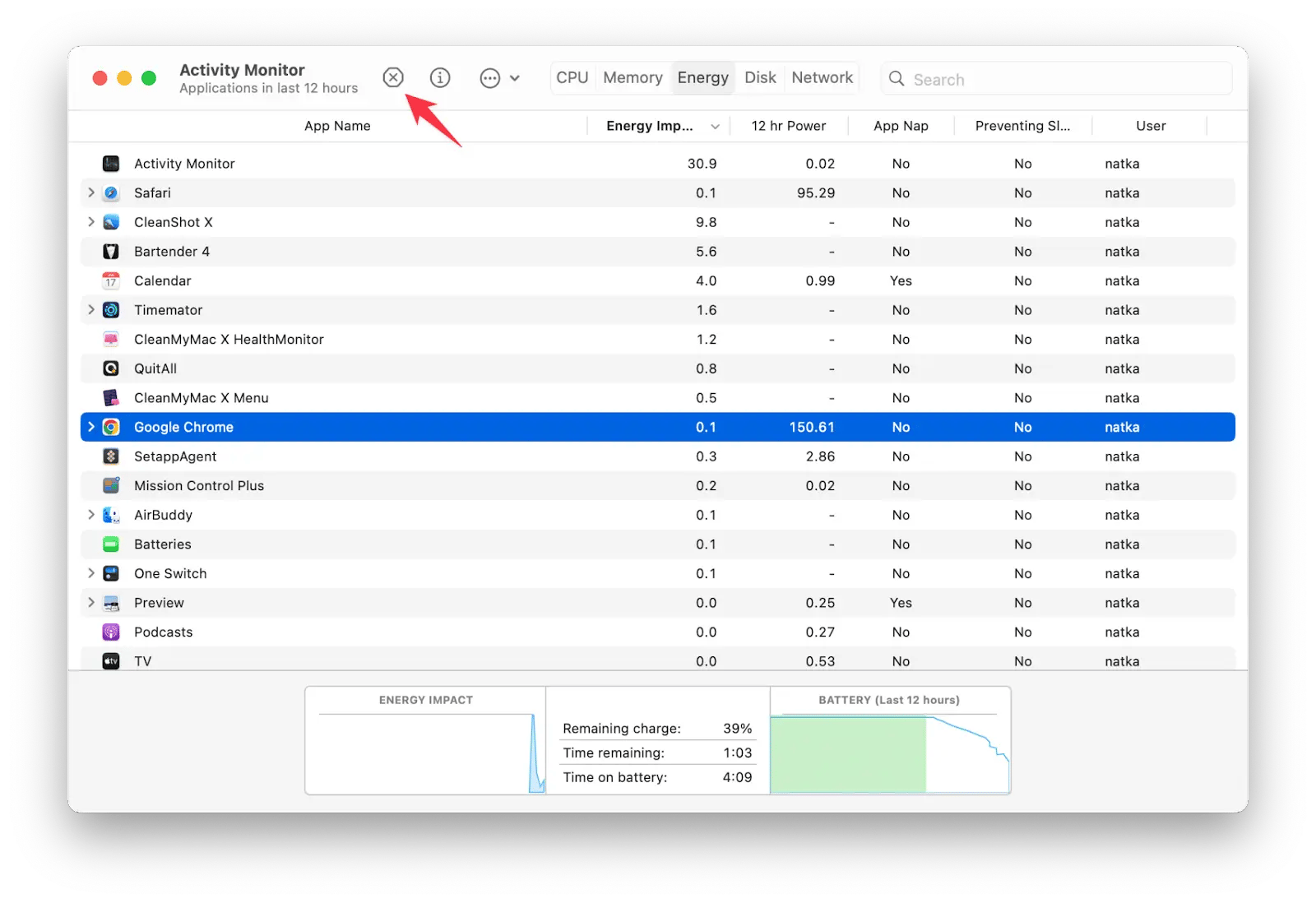
If you’re not sure which app you need to quit or you want to quit apps on the go, the fastest way to do it is by using QuitAll.
QuitAll is a macOS app that allows you to quit any number of apps (or all at once) right from your menu bar. At a glance, you can see how much CPU every app is consuming and whether any of the apps are non-responsive and need to be force-quit. For even faster quitting, you can set specific shortcuts in the app’s preferences.

The last thing you need to know about how to delete apps on a Mac that won’t delete is that restarting your Mac should help as well. If your Mac won’t restart because some of the apps are open and you can’t quit them, force restart the Mac by holding down the power button.
Now you know how to uninstall programs on Mac in a variety of ways manually, from using Finder to Launchpad to native uninstallers. And if you wonder how to delete apps from your MacBook effectively, try CleanMyMac, which will not only delete any app but clean up its leftovers, too.
Having any trouble when you want to clear apps on Mac but they won’t quit? Use QuitAll and shut down all apps with one click.
Best of all, CleanMyMac and QuitAll are available to you absolutely free for seven days through the trial of Setapp. Setapp is a platform with more than 250 top-rated macOS and iOS apps for various Apple devices, including Mac, iPhone, and iPad. You'll find apps across all categories, from web development to creative expression to optimization utilities. Try them all at no cost today and discover some new favorites!
Where are you?Fun fact: According to MacPaw and Setapp Mac Market Estimation, the MacBook Pro is the most popular device among macOS users in most markets. However, in Italy, Canada, and Australia, the MacBook Air is just as popular. |
FAQ
Does moving applications to Trash uninstall them?
Yes. One of the answers to how to delete an app on Mac is to move it to Trash. Keep in mind that simply dragging and dropping the app to Trash won’t delete any of the app’s supporting files that could be hidden in other places on your Mac. Use an app like CleanMyMac to get rid of those.
What’s the most efficient way to uninstall apps?
Want to know how to uninstall program on Mac in the most effective way? Just download CleanMyMac and use its built-in uninstaller to completely delete all apps, caches, and leftover files. Plus, optimize your Mac in seconds.
How to delete the apps that won't delete?
If you want to cleanly delete an app from Mac but it shows you an error, it’s likely that the app is currently running. Quit it with Command + Q or use QuitAll to shut down all unnecessary apps at once.
Is it possible to delete preinstalled apps from my Mac?
Yes. If you wonder how to delete app on Mac, even if it was preinstalled, the same rules apply. You can delete the app by moving it to Trash or using a complete uninstalling solution like CleanMyMac. You can generally re-download preinstalled apps from the App Store or by reinstalling macOS. Now you know how to delete app from MacBook in every way that matters, even if your Mac shows you an error message.

